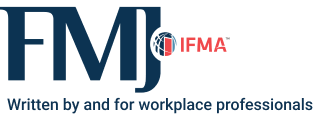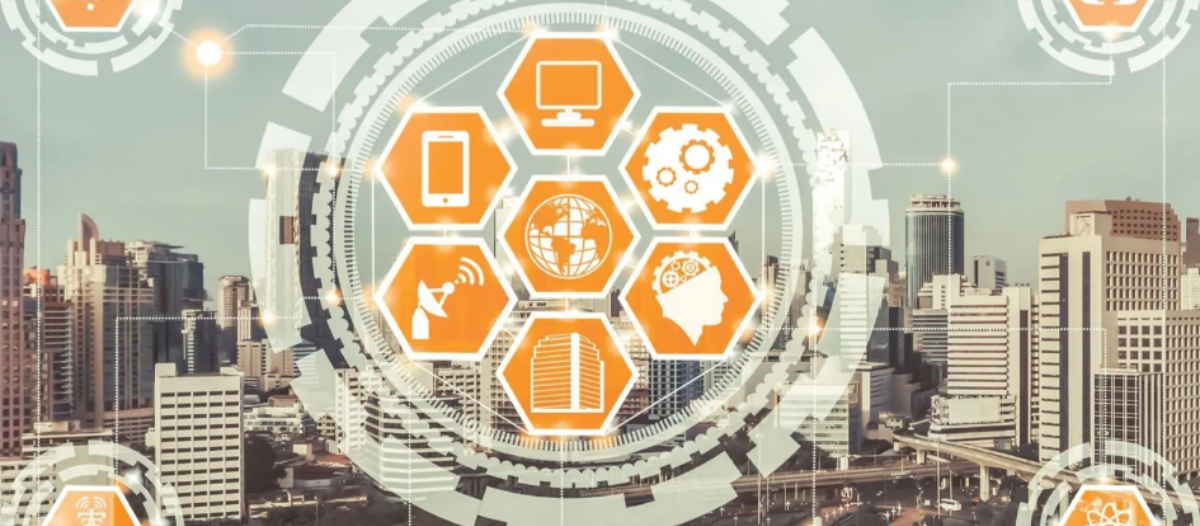Building the Hybrid Workplace
How the latest CRE technology can help

Since the onset of the COVID-19 pandemic, nearly every industry has at least partially pivoted from traditional office setups to distributed workforces with employees working fully from home or on a hybrid schedule. It is remarkable how quickly this shift happened — and it is perhaps more notable how rapidly the corporate real estate landscape has adapted.
One of the biggest changes in the CRE sector is the rise of safety-focused building features and systems. Gone are the days of extraneous spending on flashy extras such as beanbag chairs or ping-pong tables. These office perks were once intended to attract and retain talent, but they are becoming bygone relics as new workplace elements are increasingly focused on preserving occupant health and well-being.
According to the Deloitte 2021 Return to Work survey, nearly percent of companies have returned to the workplace or are planning to return this year. That means it will take coordinated efforts between CRE and facility managers, space planners and other department heads to implement building solutions that help balance work operations with ever-changing space requirements and health concerns.
Leaders have a responsibility to understand the need for these new features and implement them. Otherwise, they risk alienating their current employees, repelling new talent and hindering their ability to do business.
This can be complicated. Fortunately, innovative software tools can make the entire process far simpler.
What factors should be addressed in a hybrid work environment?
To optimize operations for a hybrid office, leaders first need to be aware of potential challenges. It may be wise to assemble a cross-departmental team including representatives from HR, facility management, CRE and any other relevant business units to create a plan and address any major concerns.
This process will help identify challenges unique to each organization. However, there is also a set of universal factors that affect every enterprise making a transition to hybrid work – crucial considerations that leaders should keep in mind when formulating plans for a new or updated workspace, including:
-
Occupant safety and perceptions: Going to work should not mean sacrificing one’s personal health. Building occupants expect and deserve a safe, accommodating and thoughtfully designed workspace when they return to the workplace. People have become accustomed to social distancing, wearing masks and always having hand sanitizer available. These accommodations should be easily accessible in a hybrid workspace; otherwise, occupants may feel that they are at unnecessary risk.
-
Space utilization and management: Most companies will not return to the workplace all at once. They will likely implement a phased approach with a portion of the workforce using the office on a part-time or as-needed basis. This raises a series of important space-related questions: How many people can be in the building at the same time? Will there be enough space to allow social distancing? How much personal protective equipment (PPE) is needed in each workspace?
In addition to these immediate logistical concerns, leaders may also find that the new space is no longer suited to the enterprise’s needs. It may make sense to lease a smaller, more flexible space or implement a series of coworking spaces in locations near remote workers. Planning, managing and tracking these changes will require close collaboration between FM, HR, CRE teams and space planners every step of the way.
-
Changes to facility operations: The pandemic has left many office buildings sparsely populated or vacant for months. FM teams will be responsible for getting normal operations up and running again so the workspace is clean and suitable for use. These teams will also likely be responsible for the logistical challenges of storing and replenishing PPE in the work environment. As this will be a new feature for many organizations, it will require new strategies and capabilities to ensure success.
How CRE technology can help meet new challenges
In September 2021, Verdantix researchers outlined four critical elements that enable success in hybrid work environments. These include:
-
Frictionless agile working that does not hinder task productivity
-
Compliant and diligent occupancy management
-
Tools that enable occupier collaboration and engagement
-
Office design reflecting actual workspace usage preferences
Leaders must be able to achieve all of these while carefully considering the factors outlined in the section above. This requires lines of sight across every department, the ability to analyze space usage data and the addition of self-service applications that enhance the building occupant experience.
This is a brand-new set of circumstances, but fortunately, the workplace management software industry is rising to the challenge. A cloud-based solution such as an integrated workplace management system (IWMS) can help facilitate and streamline all hybrid workplace operations. The pandemic has accelerated the usage of these systems, and the innovation teams at IWMS companies have tailored their solutions to meet new demands.
Here are some key IWMS capabilities that can assist in return-to-work operations:
-
Space planning and reservations: Creating and maintaining a hybrid workplace requires making the office environment more flexible than ever before. This can involve frequent reassignment of individual workspaces or the implementation of a hoteling system, in which occupants reserve and own a workspace for a designated period. To optimize these operations, organizations should know how, when and for how long space is being used. They also need the ability to quickly make changes to their floorplans. In addition, building occupants must be able to see and reserve available spaces, including desks, cubicles and conference rooms.
An IWMS can achieve all of this within a single connected system. Space reservation capabilities — complete with visual floorplan maps — can be made available to all building occupants via their mobile devices or desktops. Users can simply open their app, select a space and a time, and rest assured they have a guaranteed place to work. The IWMS system can capture that data (as well as building badge scan data) and generate reports that show CRE and FMs the full picture of enterprise-wide workspace usage. Plus, drag-and-drop features allow managers to easily re-assign space for new people or purposes on a virtual floorplan map.
-
Interactive maps and wayfinding: Hybrid workplaces will likely look quite different from the ones employees are used to. That is why floorplan visibility will be a crucial part of a successful transition. Building occupants need a way to physically navigate the redesigned — or in some cases, new — spaces they are using. They also need to be able to do this via their desktops and mobile devices. It is easy to foresee a situation in which an occupant has left their desk for another location, only to lose their way and be forced to awkwardly ask another occupant where to go (while potentially violating social distancing rules in the process).
An IWMS can address this problem as well. Interactive maps and a wayfinding system can allow occupants to easily see all company space on an interactive floorplan using any connected device. They can then select their desired space and reference the IWMS to guide them there. This can be particularly useful for locating PPE equipment like masks and hand sanitizer.
-
Automated work orders: FM teams will have a challenging task in the new hybrid workplace. They will need to ensure that all usual building operations are running smoothly while also overseeing the new health-focused features and processes mentioned above. That means stocking and replenishing PPE, as well as maintaining a clean and sanitary environment to mitigate safety concerns. To do this effectively, they need to understand which spaces are being used and when.
This is where an IWMS comes in. This type of software system can integrate space management solutions with facilities work order systems to automate common processes. For instance, when an occupant reserves a space, a work order can be automatically generated to clean and sanitize that space before and after use. Or in the case of PPE, replenishment work orders can be generated on a recurring schedule. This means that FM teams know exactly what to do, and workspace users gain the added peace of mind of knowing that their work environment is guaranteed to be clean and safe.
Building the hybrid workplace of the future
The world has never experienced a shift of this magnitude in the way work is done. Organizations transitioning to a hybrid workplace will face a new set of challenges requiring deep collaboration, data-backed decision making and an eye for innovation. How leaders respond will set the tone for their organizational success moving forward. By carefully navigating key concerns and utilizing innovative technology, they can implement thoughtful workplace features and amenities that provide an advantage in an increasingly competitive labor market.

Tom Stanford is the founder and CEO of Nuvolo Technologies and has more than 25 years of experience in building new technology ventures. Stanford is responsible for overall leadership and management of the organization. His new venture development activities include SaaS, enterprise software and professional services. He holds a graduate and undergraduate degree from Northeastern University.










